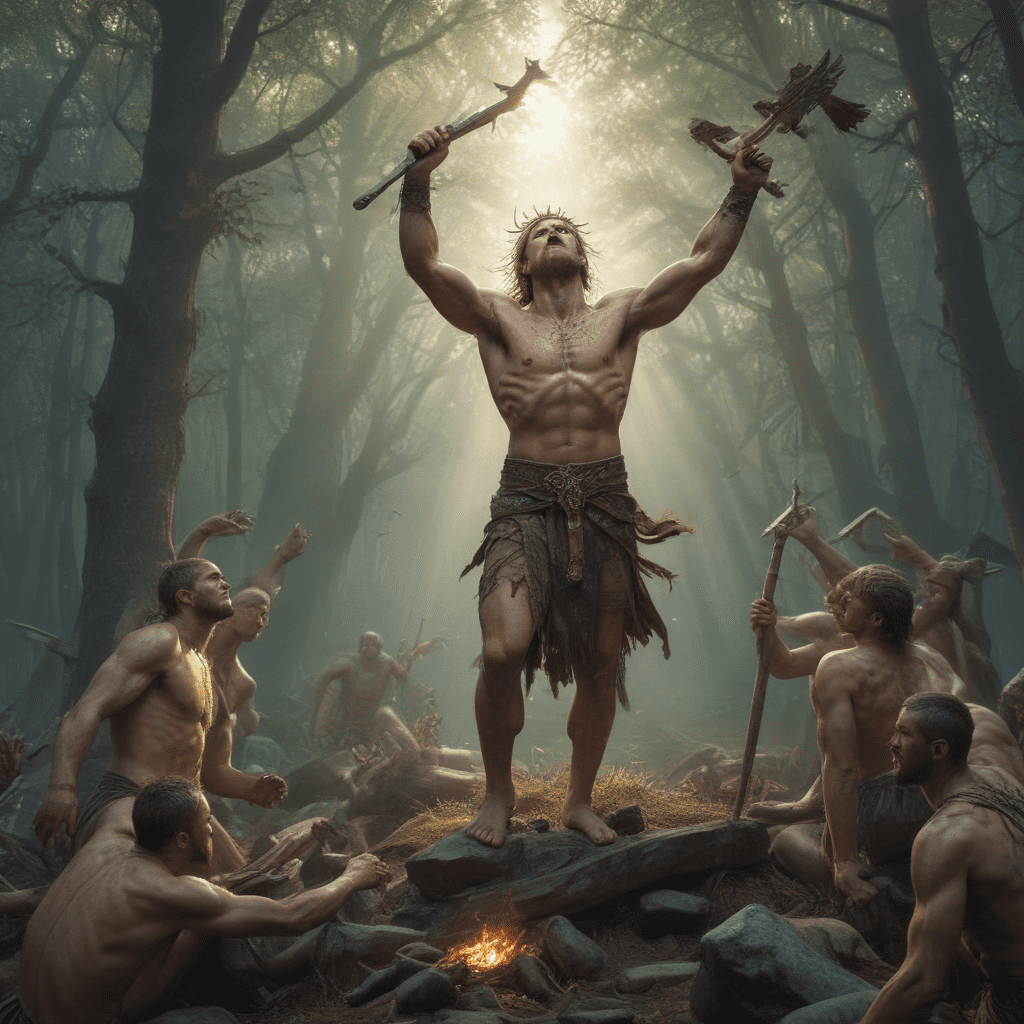The Concept of Sacrifice in Slavic Mythology
Sacrifice played a pivotal role in the religious practices and beliefs of the ancient Slavs. It was a sacred act through which individuals and communities sought to establish contact with the divine realm, express gratitude, and petition for protection, favor, and atonement. By offering something of value, the Slavs believed they could forge a bond with the gods and influence their actions.
Types of Sacrifices
The Slavs performed a variety of sacrifices, each with its own specific purpose and significance. Animal sacrifices were the most common, with cattle, pigs, and horses being the most highly valued offerings. Plant sacrifices also held great importance, as they were associated with agricultural practices and fertility. Human sacrifices, though rare and controversial, were tolerated in certain circumstances, such as during times of extreme crisis or to appease angry deities.
Deities Associated with Sacrifice
Several Slavic deities were associated with sacrifice. Svarog, the god of fire and the sky, was often invoked during sacrificial rituals. Perun, the god of thunder and lightning, was also a recipient of offerings, while Velez, the god of the underworld and wealth, was believed to be particularly receptive to sacrifices.
Rituals and Ceremonies
Sacrificial rituals were meticulously prepared and conducted. The animals or plants chosen for sacrifice were carefully selected and adorned with garlands and ribbons. The offerings were then brought to a sacred site, usually a temple or a grove, and placed upon an altar. Priests or seers led the ceremonies, chanting prayers and incantations, and interpreting signs and divination as they performed the sacrifice.
VI. Sacrificial Animals
Cattle, pigs, and horses held the highest significance in animal sacrifices among the Slavs. Cattle were particularly valued for their strength and fertility, while pigs were associated with wealth and abundance. Horses, on the other hand, were symbols of power and speed, and were often sacrificed to ensure victory in battle.
VII. Plant Sacrifices
Plant sacrifices were also an important aspect of Slavic rituals. Grain, fruit, and flowers were commonly offered to the gods, each carrying specific symbolic meanings. Grain represented the bounty of the harvest and was sacrificed to ensure agricultural prosperity. Fruit symbolized fertility and abundance, while flowers were used to express gratitude and devotion.
VIII. Human Sacrifices
Human sacrifices were a rare and controversial practice in Slavic mythology, condemned by early Christian writers. However, there are accounts of human sacrifices being performed in times of extreme crisis or to appease angry deities. These sacrifices were often carried out by drowning or burning the victim.
IX. Sacrifice and Social Hierarchy
Priests and seers played a crucial role in performing sacrifices, acting as intermediaries between the gods and the people. They were responsible for selecting the offerings, leading the ceremonies, and interpreting signs and divination. Social hierarchy also influenced sacrifices, with voluntary sacrifices being considered more honorable than involuntary ones.
X. Conclusion
Sacrifice was an integral part of Slavic mythology, shaping religious practices and beliefs. Through offerings to the gods, the Slavs sought to express gratitude, petition for favor, and maintain cosmic balance. The significance of sacrifice persists in modern-day neopaganism, where it continues to be a means of connecting with the divine realm.
Frequently Asked Questions
Q: What was the most common type of sacrifice among the Slavs?
A: Animal sacrifices, particularly cattle, pigs, and horses, were the most prevalent.
Q: Why did the Slavs perform sacrifices?
A: Sacrifices were made to express gratitude, seek protection and favor, atone for sins, and ensure cosmic balance.
Q: Were human sacrifices common in Slavic mythology?
A: Human sacrifices were rare and controversial, only tolerated in times of extreme crisis or to appease angry deities.
Q: Who performed sacrifices in Slavic society?
A: Priests and seers were responsible for conducting sacrificial rituals and interpreting signs and divination.
Q: What is the significance of sacrifice in Slavic mythology today?
A: Sacrifice continues to hold importance in modern-day neopaganism, serving as a means of connecting with the divine realm.





